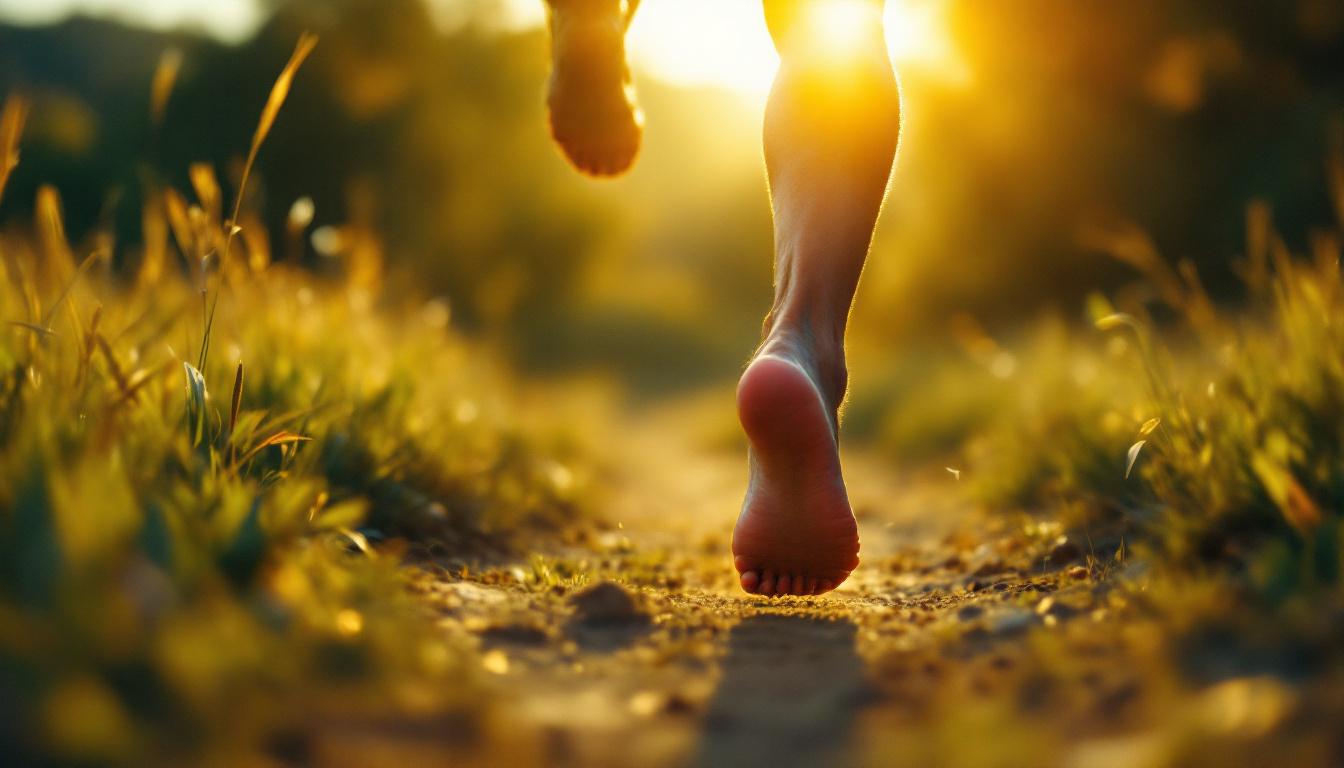Your feet contain 26 bones, 33 joints, and over 100 muscles and tendons – yet most runners keep them confined in heavily cushioned shoes. The barefoot running movement promises strengthened feet, improved balance, and more natural movement patterns, but the transition requires careful strategy to avoid injury.
The gradual path to barefoot freedom
Traditional methods for transitioning to barefoot running focus on progressive adaptation, allowing your feet to slowly rebuild strength after years of support. Dr. Michael Richards, sports podiatrist, explains: “The transition to barefoot running is essentially a rehabilitation process. Your feet need time to develop muscles that have been inactive due to conventional footwear.”
Most experts recommend starting with minimalist shoes before attempting fully barefoot running. Begin with just 10-15 minutes of barefoot walking on soft surfaces like grass or sand, gradually increasing duration as your feet adapt. This methodical approach helps prevent the muscle damage that can occur from rushing the process.
Relearning natural movement patterns
A key component of barefoot running is shifting from heel-striking to a mid-foot or forefoot landing. This change in biomechanics reduces impact forces and promotes better posture throughout your entire body.
Essential form adjustments include:
- Leaning slightly forward from the ankles
- Landing with feet beneath your center of gravity
- Taking shorter, quicker strides to reduce impact
“When you run barefoot, think of your feet as springs rather than hammers,” advises running coach Sarah Thompson. “The arch of your foot naturally compresses and rebounds, storing and releasing energy with each step.”
Strengthening exercises for successful transition
Building foot and lower leg strength accelerates adaptation and reduces injury risk. These targeted exercises can significantly improve muscle development during transition:
- Toe raises and marble pickups to strengthen intrinsic foot muscles
- Calf stretches against a wall to lengthen the Achilles tendon
- Rolling a tennis ball under your foot to release fascial tension
Marathon runner James Wilson transformed his running through this approach: “After suffering recurring knee pain, I transitioned to barefoot running over six months. My foot strength increased dramatically, and my knee pain disappeared completely.”
Listening to your body’s signals
The most overlooked aspect of barefoot transition is proper recovery. Your body provides clear feedback – mild discomfort in calves and soles is normal, but actual pain signals you’re progressing too quickly. Surprisingly, even your tongue position can affect your running mechanics.
The transition timeline varies widely between individuals. Research suggests most runners need 3-6 months to fully adapt, with recovery being as important as training. Understanding the ratios of workout to recovery time is crucial for success.
Think of your transition to barefoot running like teaching a child to walk – your feet need to rediscover their natural abilities through consistent, gentle practice. Start with small, mindful steps today, and within weeks, you’ll feel the remarkable difference of reconnecting with the ground beneath you.
